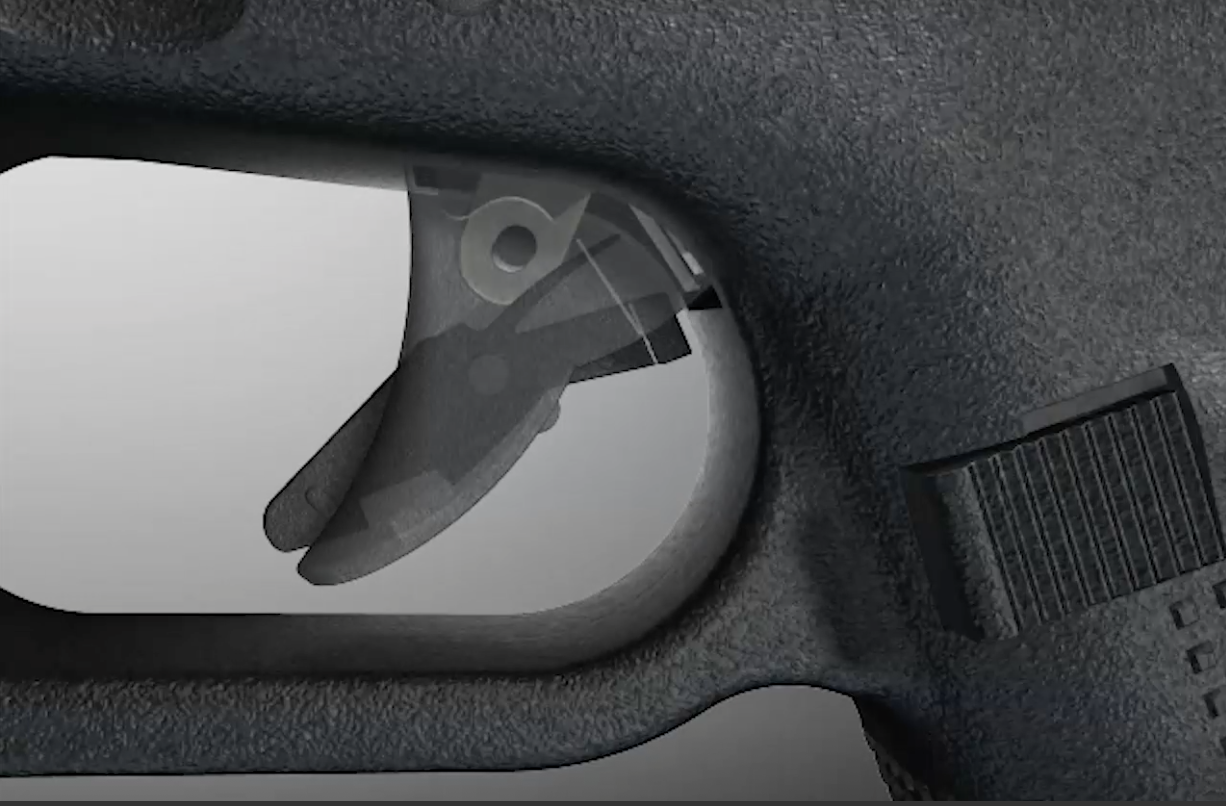
There is a surprising amount of confusion surrounding the anatomy of a trigger press in striker-fired pistols. Trainers, armorers, and shooters alike often use terms like “take-up,” “slack,” and “creep” interchangeably or inaccurately. The result? Miscommunication, improper diagnostics, and ineffective training.
At Strategic Defense Academy, we’ve encountered the same confusion many others have faced when trying to understand and teach the striker-fired trigger press. Through patient study, hands-on analysis, and field application, we’ve worked to bring clarity to the topic. This guide is offered in that spirit—clear, grounded, and open to further refinement. It’s intended for shooters, instructors, and anyone seeking a deeper, more accurate understanding of how the trigger functions, one phase at a time.
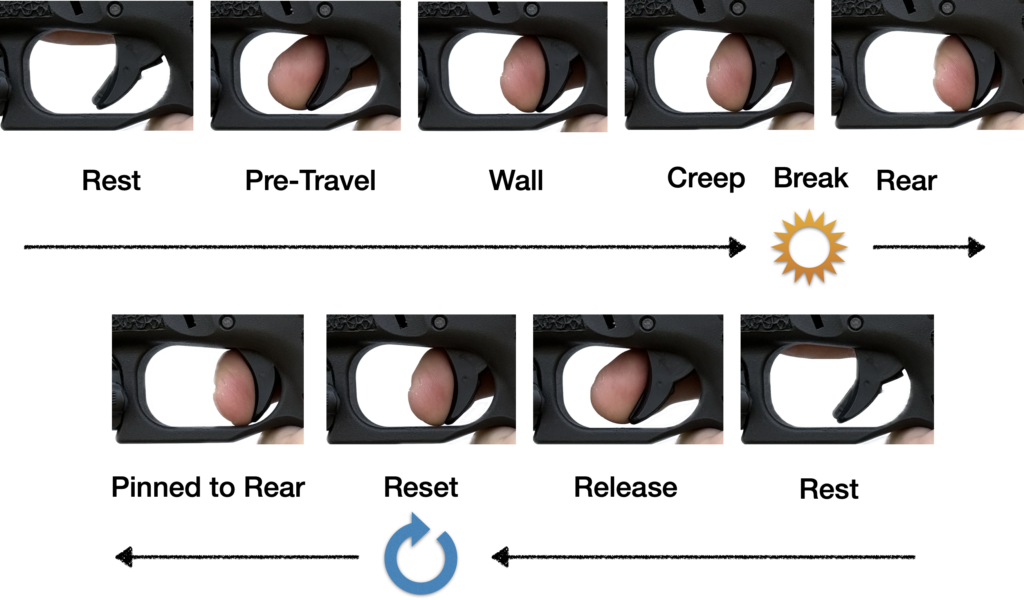
Pre-Travel
Definition: Pre-travel is the total distance the trigger moves from its resting position to the point of striker release, encompassing all stages before the break.
What’s happening: This includes slack, take-up, the wall, and potentially creep. It represents the entire preparatory phase before the trigger breaks.
Why it matters: Understanding pre-travel as a sequence of stages helps shooters identify and isolate errors in their trigger press, as well as tune their technique to each phase of movement.
Slack
Definition: Slack is the initial portion of trigger pre-travel characterized by minimal resistance. It typically involves disengaging the trigger safety and beginning movement of the trigger bar.
What’s happening: Internally, the trigger safety tab is depressed, and the trigger bar starts to move, but significant tension on the striker spring has not yet begun. It may feel loose, springy, or hollow.
Why it matters: Recognizing slack helps shooters know when the real trigger work begins. Misidentifying slack as take-up leads to poor trigger staging and anticipation.
Take-Up
Definition: Take-up follows slack and involves light but increasing resistance. This is where the striker spring begins compressing as the trigger bar cams the striker rearward.
What’s happening: Mechanical engagement begins. The shooter is now actively tensioning the striker spring with increasing pressure.
Why it matters: This is where most striker-fired pistols begin their functional engagement. Understanding the feel of take-up allows shooters to smoothly stage up to the wall without rushing the process.
Wall
Definition: The wall is the point where resistance sharply increases. It’s the moment where the striker spring is nearly fully compressed, and the system is on the edge of releasing the striker.
What’s happening: The trigger bar is pressed firmly against the connector and striker lug. You’re now in full engagement with the firing system.
Why it matters: This is the decision point. The shooter can pause here and prep the final press, maintaining control and minimizing movement.
Creep
Definition: Creep is any additional trigger movement after the wall but before the break. It involves the final mechanical motion as the trigger bar pushes through the connector ramp.
What’s happening: The sear or striker lug is moving slightly under tension, but hasn’t yet released.
Why it matters: Excessive creep can feel gritty or spongy and disrupt shot placement. Minimizing or managing creep leads to cleaner breaks.
Break
Definition: The break is the exact moment the striker is released and the shot fires.
What’s happening: The trigger bar drops off the connector, and the striker spring unloads its energy.
Why it matters: A clean, crisp break leads to consistent shooting. Anticipating the break too early is a leading cause of flinching.
Over-Travel
Definition: Over-travel is the continued rearward movement of the trigger after the striker is released.
What’s happening: The trigger continues to move after the break, with no further mechanical function.
Why it matters: Too much over-travel can disturb the shooter’s grip or introduce movement post-shot. Many competition triggers reduce or eliminate this.
Reset
Definition: Reset is the forward movement of the trigger to the point where the firing mechanism re-engages and the trigger is ready to be pressed again.
What’s happening: The trigger bar re-engages the connector. You’ll often feel or hear a click.
Why it matters: A short, tactile reset enables fast follow-up shots and rhythm in rapid fire. Training to reset consciously helps build consistency.
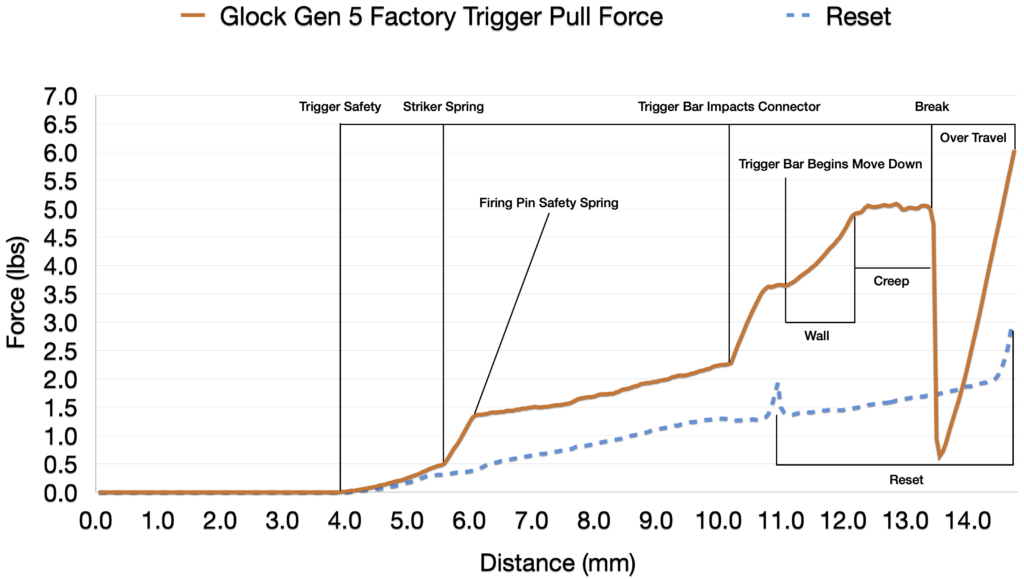
Visualizing the Trigger Press: Force vs. Travel
The chart above illustrates the trigger pull force (Y-axis) against trigger travel distance (X-axis) for a striker-fired pistol. The solid orange line represents actual measured force, while the dotted blue line shows a smoothed approximation. This visual helps demystify the distinct stages of the trigger press:
- Slack: The flat section at the beginning shows negligible resistance—this is the slack phase where the trigger moves without building significant spring tension.
- Take-Up: As the curve begins to rise, we enter the take-up phase, where the striker spring begins to compress. Force builds gradually.
- Wall: The steeper incline represents the wall—force increases sharply as the system nears full mechanical engagement.
- Creep: The plateau or small undulations after the wall indicate slight continued motion under tension, before the release. These are subtle movements during the sear’s final engagement.
- Break: The sudden drop in the force curve marks the break—the point where the striker releases and the shot fires.
- Over-Travel: The brief dip following the break represents the continued rearward movement of the trigger without mechanical function.
- Reset: After over-travel, the shooter must allow the trigger to move forward to the reset point, which is where the striker re-engages the striker and the system becomes ready to fire again.
This graph provides a powerful visual confirmation of what the shooter feels during the trigger press, and reinforces the importance of identifying and training through each phase with deliberate control.

How Feel Translates to Mechanics: Understanding What’s Happening Inside the Gun
When you press the trigger on a striker-fired pistol, you’re initiating a highly orchestrated sequence of internal mechanical events. Each stage builds on the last, and though it may feel like one smooth pull, the gun is going through multiple precise transitions—all of which can be felt subtly through your finger.
Here is the true order of operations from a mechanical perspective, paired with what the shooter typically perceives:
Let’s walk through how what you feel under your finger maps to what’s happening inside the gun:
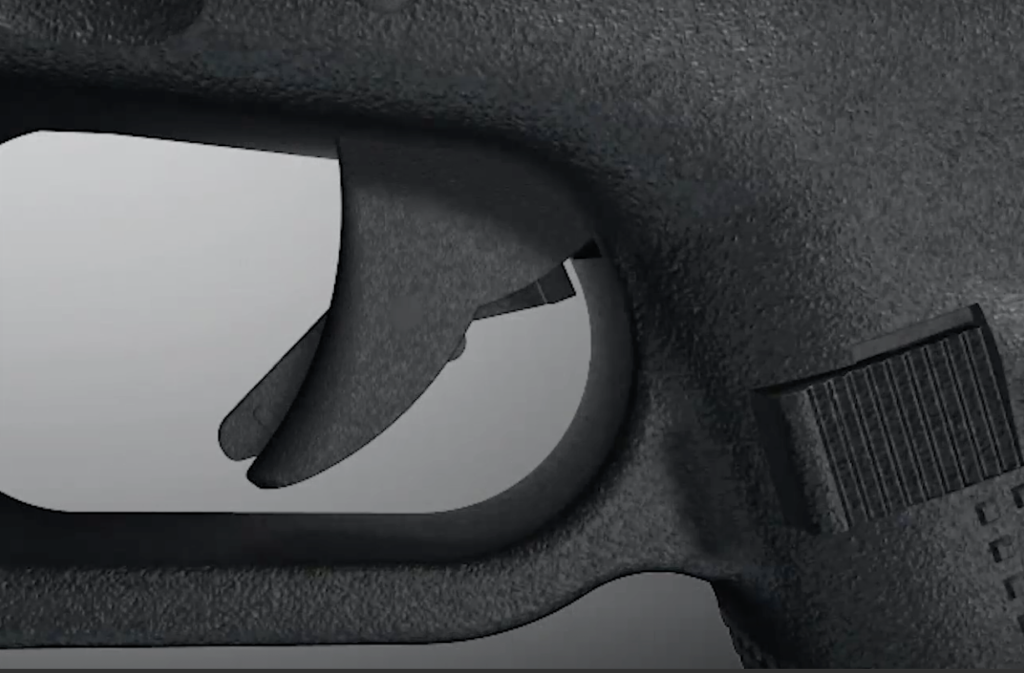
1. Trigger safety is disengaged.
As you begin applying pressure, the first thing that happens is the depression of the trigger safety tab. Mechanically, this unlocks the trigger shoe and allows the trigger bar to begin moving rearward.
What you feel: A light, springy resistance. The trigger moves freely at this stage.
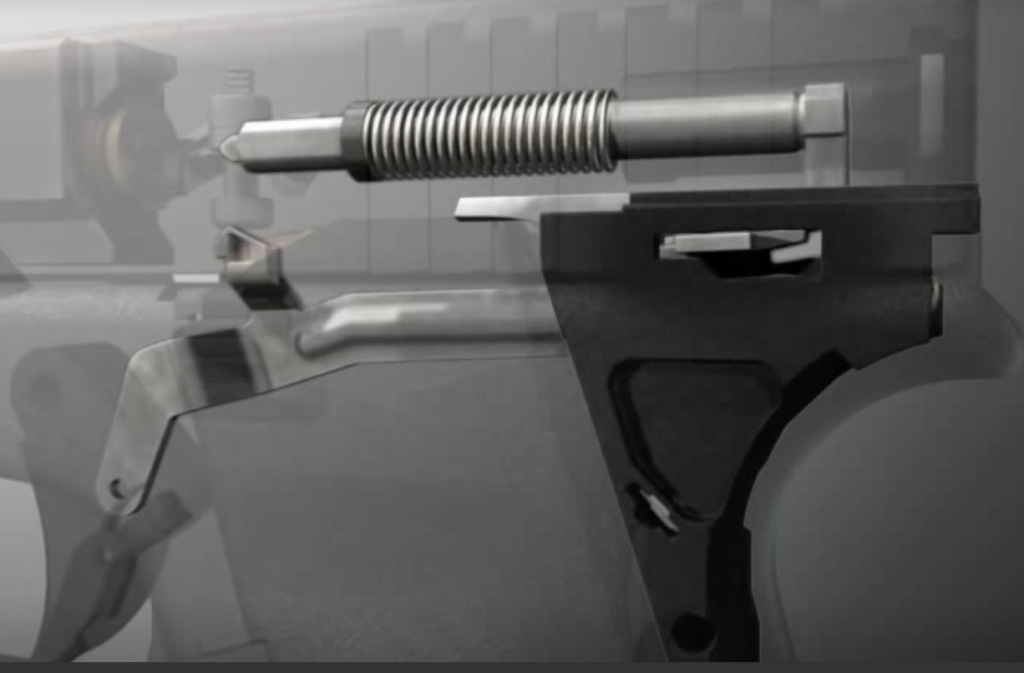
2. Striker spring engagement begins.
Almost immediately after the trigger begins to move, the trigger bar contacts the striker lug. From this point forward, your finger is directly compressing the striker spring via the trigger bar.
What you feel: Gradual increase in resistance as the spring tension builds. This is the real “weight” of the trigger press.

3. Firing pin safety is engaged and compressed.
As the trigger bar continues rearward, its vertical extension contacts the firing pin safety plunger. The trigger bar must lift this spring-loaded plunger to allow the striker to move freely when released.
What you feel: A minor increase in resistance layered into the ongoing build-up.
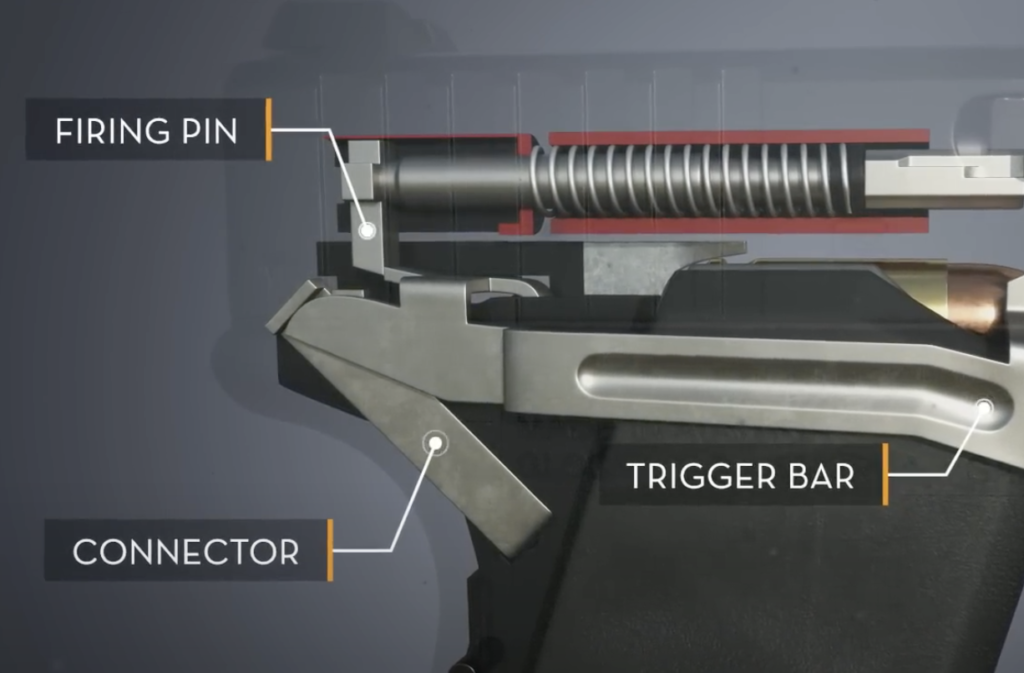
4. Trigger bar impacts the connector ramp.
The rearward-moving trigger bar reaches the downward face of the connector. The connector serves as a mechanical gate—it resists downward movement until enough pressure is applied.
What you feel: A sharp increase in resistance.
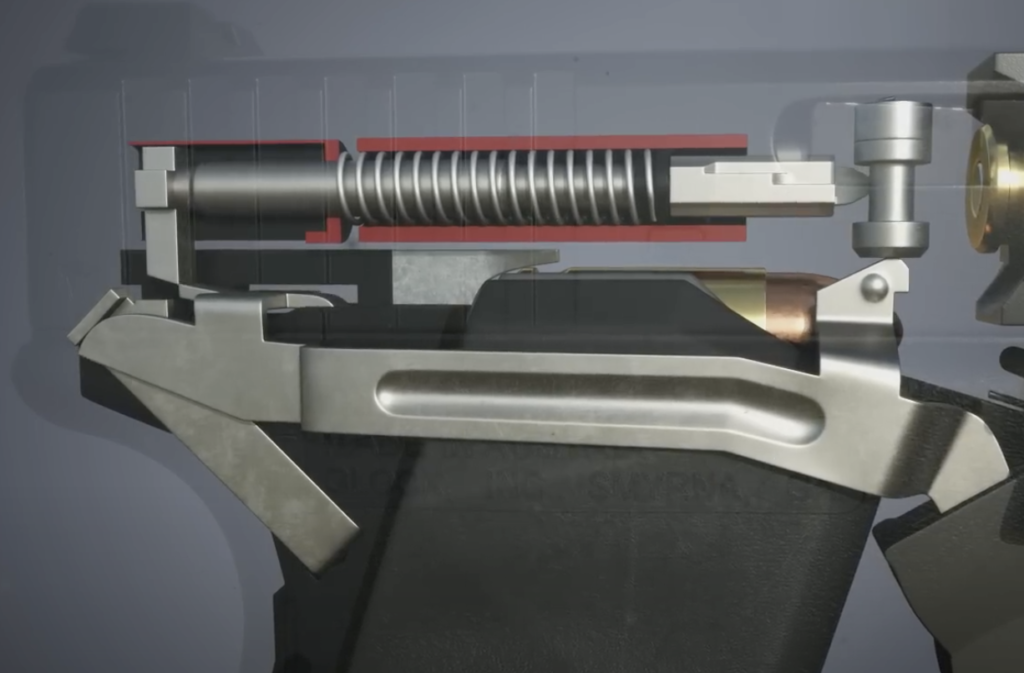
5. Connector begins directing the trigger bar downward.
As more pressure is applied, the trigger bar is forced down the angled surface of the connector. This downward motion disengages the rear tab of the cruciform from the striker lug.
What you feel: A brief sensation of movement under tension—possibly a little “creep” if the surfaces aren’t polished. This is the last bit of resistance before the break.
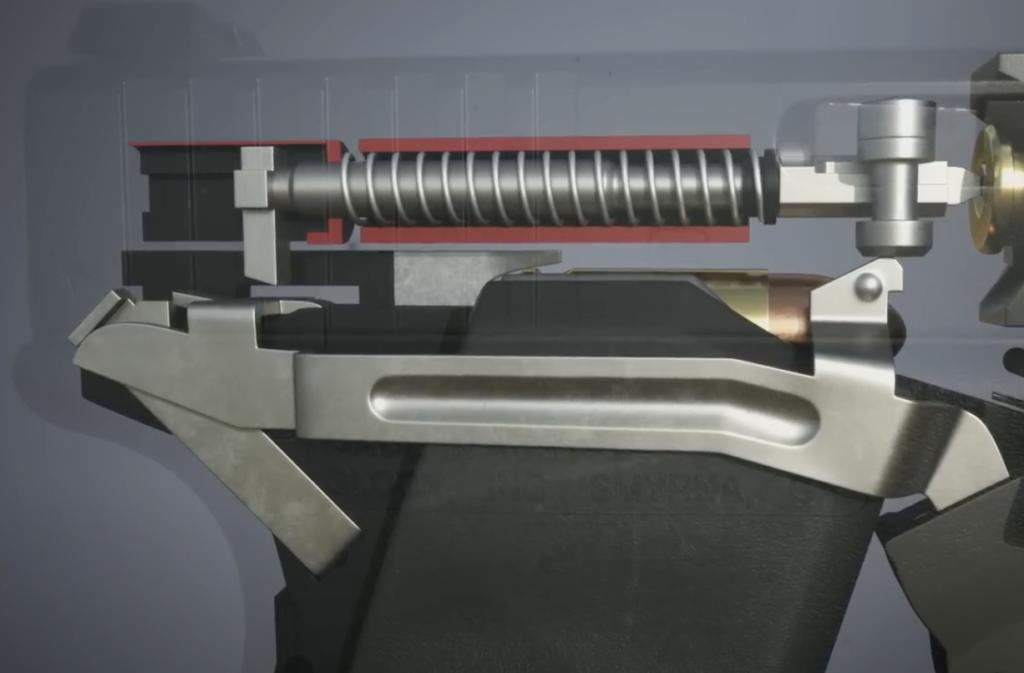
6. Break: Cruciform drops, striker releases.
Once the trigger bar is cammed downward far enough by the connector, it no longer holds the striker in place. The striker is released forward under full spring tension and impacts the primer.
What you feel: A sudden drop or snap—often called the “break.” Pressure on the trigger disappears as the mechanical load vanishes.

7. Trigger reaches its rearward limit.
With no further work to do, the trigger continues rearward until it bottoms out against the frame or trigger stop.
What you feel: Smooth, low-resistance travel with a firm end point. This is the end of the physical movement in the press.
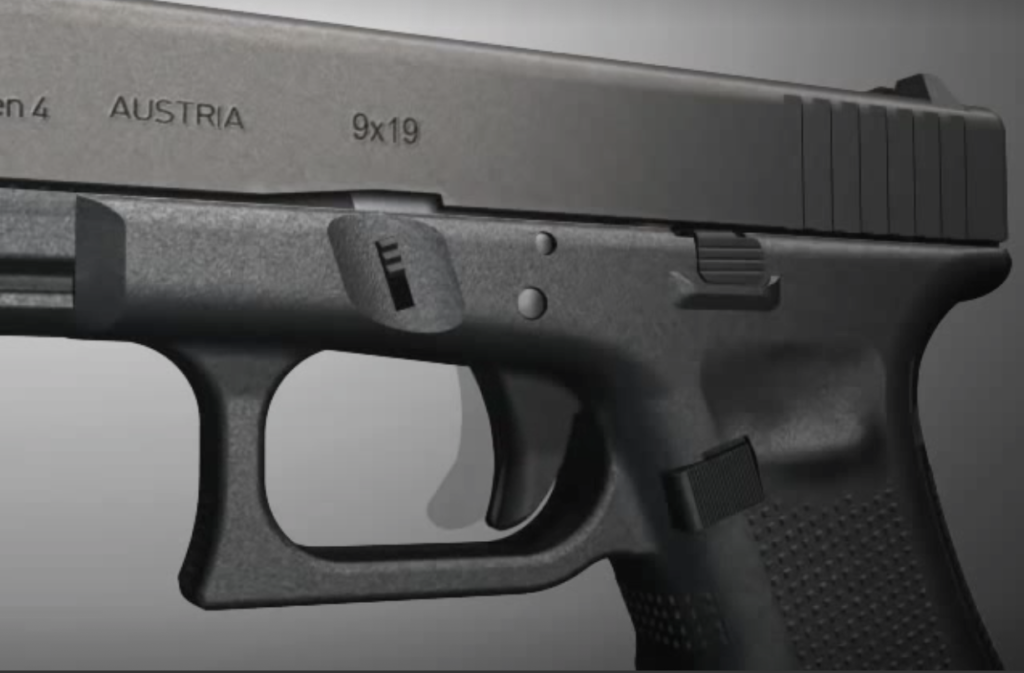
8. Reset occurs during forward movement.
As you release the trigger slightly, the trigger bar moves forward and re-engages the connector. Once reset, the gun is ready to fire again.
What you feel: A faint click forward—audible and tactile in most striker-fired designs.
This breakdown puts the mechanics first—mapping exactly what happens inside the fire control system to what you feel outside. When you understand the why behind the trigger’s feel, you can train, diagnose, and teach with far more precision.
Final Thoughts
Understanding the internal mechanics behind what we feel during the trigger press is essential—not just for improving marksmanship, but for diagnosing errors, evaluating equipment, and teaching others effectively. Many common terms like “slack” and “take-up” are often used inconsistently or without reference to what’s actually happening inside the gun.
Our aim in this article has been to bridge that gap—mapping mechanical events to tactile feedback with clarity and precision. The striker-fired trigger system isn’t just a matter of feel; it’s a sequence of deliberate, mechanical transitions. When those transitions are named and understood, the shooter gains control, insight, and intentionality.
